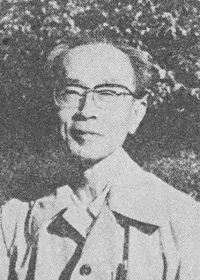| In a recent interview, Wu Xiaobang, 76, president of the Chinese Dancers' Association, recounted his artistic career and reaffirmed that Chairman Mao's Talks at the Yan'an Forum on Literature and Art provides the appropriate orientation for Chinese cultural creations.
In July 1942 when he read the text of the Yan'an Talks dispatched from Yanan to Chongqing, a city in southwest China, he found with astonishment that Chairman Mao called on writers and artists to serve the workers, peasants and soldiers. Mao Zedong proclaimed that literature and art was a weapon for uniting the people and attacking the enemy. Wu Xiaobang found these views in accord with his artistic experience during the war years.
Late in the 1920s when Wu Xiaobang was a youth, he was the first ballet major in China. In the 1930s, he became a founding member of modern Chinese dance. After the War of Resistance Against Japan broke out in 1937, this young dancer joined the national salvation performing team which worked along the railway lines near Shanghai.
He recalled: "Gunfire woke me from my dream of locking myself in the ivory tower of advanced artistic studies. I began to see how vast the world outside the tower was and considered how I should contribute my artistic skills to the times. War taught me the scientific foundation of modern dance. I considered not what beautiful movements and postures could be achieved in ballet, but the need to base dances on the heroic images of the Chinese people fighting in the thick of their miserable life. I was not clear whether I should perform modern dances or folk dances; I was governed by one thought that my dancing should serve the struggle for the survival of the Chinese nation."
 |
|
Wu Xiaobang in 1981 |
Motivated by this idea, Wu Xiaobang was imbued with imaginative power. His creativity grew and his achievements multiplied. Through various dance forms, he attacked the aggressors and Chinese traitors and expressed his nostalgia for his native village. Through his dances he praised the guerrillas and messengers and portrayed the famine victims languishing in a hopeless state and ordinary people yearning for freedom. In depicting a fighter in the solo dance which he choreographed on the basis of the resistance song March of the Volunteers, he dramatized the line which read: "Arise! People who do not want to be slaves build our new Great Wall with our flesh and blood." This portrayed the indomitable spirit of the Chinese people. In another dance he employed symbolism and utilized the antics of the clowns in traditional operas and the satirical methods of Chinese folk arts to expose the international fascists who tried to dominate the world, and to ridicule the officials who claimed merit for themselves by serving the invaders. He also created a dance based on the Internationale, then a popular tune among the patriotic Chinese youths.
"I clearly remember that both in the cities and the countryside the spectators reacted strongly to these performances," he continued. "Once we performed in Nanchang for the wounded soldiers. The solo dance I performed as the volunteer fighter was greeted with rousing applause. Then I repeated the dance, the audiences, filled with indignation, sang aloud in unison. When I performed it again for the third and the fourth times, many people stood up, sang and beat the time. Amidst this warm atmosphere in which people were united and filled with hatred for the enemy, I danced a fifth performance. Thus, my artistic life entered a new stage of realism."
After reading Chairman Mao's Yan'an Talks, Wu Xiao-bang more consciously regarded his artistic career of dance as a weapon for revolutionary struggle. After a tortuous journey, this dancer who was born into a wealthy family and was accomplished in music, literature and painting came in 1945 to Yanan, the headquarters of the revolution. There he passed his experiences and creative skills on to young artists.
Later during the War of Liberation which was aimed at defeating the reactionary rulers, he choreographed the full-length Marching Dance to present the power of the people's soldiers. The dance was well received and was performed in various parts of the country. In the Triology of the Inner Mongolian People, he used the national minority dance materials he had gathered to depict the life, struggle and liberation of the Inner Mongolian people.
After the founding of the People's Republic of China in 1949, this accomplished dancer, upholding the tradition of realism under the guidance of the principle that literature and art should serve the workers, peasants, soldiers and other working people, tried to create dance pieces praising the new epoch and reflecting the life and struggle of contemporary people. In addition, he diligently studied the dances of minority nationalities living in southwest China and ancient China's music and dances. On the basis of this research, he refined a number of his dances and created many new ones.
In recent years, this influential dancer has given numerous lectures. He calls on professional and amateur dancers to pay attention to the tradition of revolutionary literature and art developed since the 1919 anti-imperialist and anti-feudal patriotic movement. He stresses that like other kinds of art, dance should be based on life. He encourages the dancers to plunge themselves into the thick of life and create works that reflect the spirit of the 1980s and inspire people to forge ahead triumphantly on the new Long March. | 